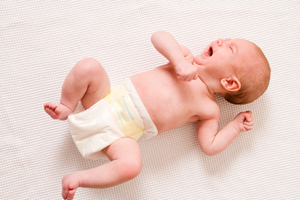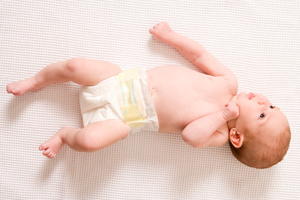Newborn Reflexes
Newborn Reflexes
What reflexes should be present in a newborn?
Reflexes are involuntary movements or actions. Some movements are spontaneous and occur as part of the baby's normal activity. Others are responses to certain actions. Healthcare providers check reflexes to determine if the brain and nervous system are working well. Some reflexes occur only in specific periods of development. The following are some of the normal reflexes seen in newborn babies:
Rooting reflex
This reflex begins when the corner of the baby's mouth is stroked or touched. The baby will turn his or her head and open his or her mouth to follow and root in the direction of the stroking. This helps the baby find the breast or bottle to begin feeding. This reflex lasts about 4 months.
Suck reflex
Rooting helps the baby become ready to suck. When the roof of the baby's mouth is touched, the baby will begin to suck. This reflex does not begin until about the 32nd week of pregnancy and is not fully developed until about 36 weeks. Premature babies may have a weak or immature sucking ability because of this. Because babies also have a hand-to-mouth reflex that goes with rooting and sucking, they may suck on their fingers or hands.
Moro reflex
The Moro reflex is often called a startle reflex. That’s because it usually occurs when a baby is startled by a loud sound or movement. In response to the sound, the baby throws back his or her head, extends out his or her arms and legs, cries, then pulls the arms and legs back in. A baby's own cry can startle him or her and trigger this reflex. This reflex lasts until the baby is about 2 months old.
Tonic neck reflex
When a baby's head is turned to one side, the arm on that side stretches out and the opposite arm bends up at the elbow. This is often called the fencing position. This reflex lasts until the baby is about 5 to 7 months old.
Grasp reflex
Stroking the palm of a baby's hand causes the baby to close his or her fingers in a grasp. The grasp reflex lasts until the baby is about 5 to 6 months old. A similar reflex in the toes lasts until 9 to 12 months.
Stepping reflex
This reflex is also called the walking or dance reflex because a baby appears to take steps or dance when held upright with his or her feet touching a solid surface. This reflex lasts about 2 months.
Updated:
March 21, 2017
Sources:
Lewis, Mary L. A Comprehensive Newborn Examination: Part II. Skin, Trunk, Extremities, Neurologic. American Family Physician. 2014: issue 90, 5th ed. pp. 297-302., Neurologic examination of the newborn. UpToDate.
Reviewed By:
Freeborn, Donna, PhD, CNM, FNP,Lee, Kimberly G., MD, MSc, IBCLC

